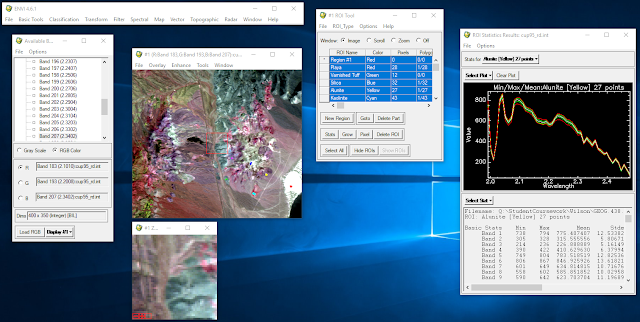Lab 10: Radar remote sensing
Goals and background: The goal of this lab was to familiarize students with specific procedures associated with radar remote sensing images. The specific functions that were practiced were noise reduction (salt and pepper effect reduction) through speckle filtering, spectral and spatial enhancement, multi-sensor fusion, texture analysis, polarimetric processing, slant-range to ground-range conversion. Methods: Part 1 Section 1: Speckle suppression 25 m spatial resolution satellite (microwave) L-band remotely sensed images from the Shuttle Imaging Radar (SIR-A) experiment of the Lop Nor Lake in the Xinjiang Province of China were brought into ERDAS Imagine. The area includes a former lake bed with a basin area and also a cliff overlooking that basin. Figure 1 shows a regular oblique aerial image of the area found on Wikipedia. Figure 1: Oblique aerial imagery of Lop Nor Lake Speckle reduction was used to improve clarity of this image, this was found in the Utilities folder...
